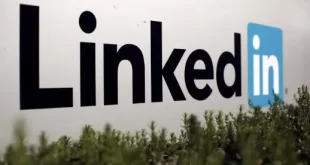Niju Nair, Director- Business Management, ASEAN Region, Detroit Engineered Products (DEP) explains his business model and the dynamics of the drone industry
What are the solutions and products available in the DEP portfolio?
DEP is a complete product development house where the customers get their product solutions realized during any stage of its development, right from conceptual phase till the prototype & production. DEP has the expertise and experience in the development of both Rotor drones (quadcopter) as well as fixed wing drones.DEP has Drone development capabilities as one of its solutions offering & is not in the business of developing and marketing drones.
DEP team participates in the Drone development requirement of customers from multiple industries. The technology and product engineering at DEP stands out in the market because of several factors & one of the major factors is its design team’s ability to build variants of the drone model right from the conceptual stage & conduct parametric studies catering to the specific application area. This will enable the possibility of obtaining exceptional designs. DEP has supported customers in the development of bird scaring drones (to drive away the birds which causes damages to the assets in the aerial territory), customers in agricultural industry for various applications including surveillance.
What are the verticals witnessing maximum traction for these products from DEP and what are their use cases?
The verticals which witnessed maximum traction in general for commercial drones during this fiscal year 2020 are energy, transportation, agriculture and construction. The business focus for DEP is into complete product development support as well as engineering support to drone makers. DEP has supported customers from agriculture as well as construction industries. For agriculture, the applications are mostly into land mapping as well as weed spraying for large farms. There are also new programs in progress especially in the harvesting side too. It is interesting to note that the farming & planting community has realized the need of technology and innovation and are trying to implement technology right from the start of process. The other vertical where DEP has supported the customers is from the construction industry mainly on the inspection of site and equipment. The selection of the relevant sensors & deployment of the same, integration of sensors & electronics, assembling, prototyping etc are some of the capabilities which DEP has in addition to design and development.
In the current COVID-19 pandemic situation, how has drones been used for enforcing lockdown in containment zones?
The main task which is cut out for governments and authorities across the world during the current times is to stop the spread of the COVID-19 virus. There are several practices getting implemented for the same like social distancing, lockdown etc. However, the people in many areas do not abide by these norms or the restrictions in place (many of them are not even aware of the same). The deployment of drones has significantly helped authorities & police to reduce the risk of spread of virus through some of the actions as follows:
- Surveillance: The drones enabled monitoring of the social gatherings and movement of people and authorities were able to take necessary actions (like dissolving the crowd, educating people etc) as required at a very quick pace.
- Temperature monitoring: The drones were used to measure the temperature for the people who were locked down in large apartment complexes. The authorities used infrared cameras enabled drones for the same. This avoided the close contact of the people.
- Spraying: The spray drones were used in large scale to disinfect potentially affected areas.
- Delivery: The Drones were used for medicine as well as grocery delivery especially on the red zones where external contact should be bare minimum.
- Broadcasting: TheDrones equipped with loudspeakers were deployed for public announcements to make people stay indoors, take necessary precautions, ensure social-distancing and wear a mask if stepping outside from their respective homes.
How are drones being used by the weather department especially in situations like the recent locust attacks?
The drones are used extensively to understand about the chemical composition of the atmosphere, study air pollution and also for forecasting weather. The drones and other unmanned technologies can cost-effectively collect weather data in severe or remote environments and can play very important role in weather and climate predictions. For example, scientists use inexpensive, small and easily deployable unmanned systems such as tethered balloons & unmanned aircraft systems or drones to analyze lower atmosphere processes. The drones offer greater vertical and horizontal range, and can acquire data beyond the line of sight of the operator. Also, it can cover larger areas and capture measurements across a model grid box instead of a single point which is very important for weather model development.
In the recent locust attacks in a village near to Jaipur in India, customized drones (provided by union ministry of agriculture) were used by the state department. It was designed to spay 10 litres of chemicals along with generating a sound that would scatter the locusts to different directions. This resulted in successful containment of locust in the open area and foothills which were not accessible through traditional methods or tractors. The department is planning to deploy more such drones.
What is the GTM strategy followed by DEP? What are the omni channels available for your delivery?
DEP is not into the business of manufacturing and marketing drones under its brand name. DEP has drone product development support and engineering as one of its solutions offerings and it support customers as required for complete product development or as piecemeal engineering services. The customers could be from multiple industries like Agriculture, Energy, E-commerce, Construction, defense etc. DEP will support these customers on their GTM strategies (GO-TO-MARKET).It will be the customer who will decide on the omni channels and work towards setting up the same. The responsibility of DEP engineers will be only to work on the product development programmes as per the requirements of the customers viz. deliver the complete product as a prototype or offer a particular engineering service. The engineers at DEP will also participate during the testing phase of the product along with the customers and many times participate on the technical design support of the product (which is already deployed in the market) either for attending specific technical issues or for optimization.
What are your business and operating models?
As DEP’s role and responsibility is totally into product development and engineering services, it has only execution business models to support its customers viz. Manufacturers of drones from different industries like agriculture, e-commerce, construction. The execution business models are categorized into long term engineering programs (time & material based complete product development programs) or short-term engineering programs (fixed cost engineering service). The product business models, market launches &operating models are totally decided by the customers.
What has been the benefits offered by Garuda?
The Garuda is a self-funded drone program from DEP for various industry applications like agriculture, defense services etc. Following are the main highlights & benefits of Garuda:
- Flying wing drone with blended wing – body design and winglets for soaring and endurance
- Bird deterrent platform with onboard bird deterrent ultrasonic sound generator
- Lightweight Carbon reinforced hollow core form structure
- Twin Elevon flight control surfaces with digital metal geared servo actuators
- Electric brushless DC out runner motor with folding pusher propeller
- Lithium Polymer lightweight high-power density battery pack
- Onboard flight controller with built in motor control and autopilot features
- Onboard video and still camera with first person view capability
- Handheld transmitter with joystick flight control
How does DEP differentiate itself from other drone manufacturers?
DEP is in the business of supporting the product development & product improvement aspirations of Drone manufacturers. DEP has several highlights which differentiate itself from the development of the drone manufacturers & hence is the reason that they approach DEP for technology and product development support as required. DEP has the experience and expertise of the complete drone product management including integration of electronics, electrical, mechanical and electromechanical components. However, one of the most important highlights is its design team’s ability to build variants of the drone model right from the conceptual stage & conduct parametric studies catering to the specific application area. This will enable the possibility of obtaining exceptional designs.
How do you ensure compliance with different levels of security?
The compliance with different levels of security are to be followed by the user / operator of the drones synchronous with the guidelines provided by the manufacturer. The compliances do not apply to DEP as it only provides product development and engineering services support to its customers who will be the primary manufacturer & seller of drones. However, DEP will consider & follow all the security compliance requirements as stated by its customers during the drone product development and engineering. In India, the remotely piloted aircraft (RPAs) and unmanned aircraft (drones) are governed by the Civil Aviation Requirements (CAR) issued by the Directorate General of Civil Aviation (DGCA).
What about manufacturing the products in the domestic market?
There are several manufacturers available in India for the manufacturing of drone components as well as complete drone. DEP team was able to prototype and manufacture the drone within India with maximum components being sourced from the domestic market & limited international collaboration. The sourcing and integration of all the components viz. airframe, propulsion system (motor & battery), actuators, motor controller, onboard receiver etc was done in India except the flight controller & pilot transmitter / controls. However, the manufacturing ecosystem is only just started picking up in India as India accounted for about 20% of the global imports of the Unmanned Ariel Systems (UAS) till recently. The investment to the drone industry is going to be exciting because of the strong “Make in India” push by the government.
 Latest Technology News Today – Get Latest Information Technology Updates and Services Latest Technology News Today – Get Latest Information Technology Updates and Services
Latest Technology News Today – Get Latest Information Technology Updates and Services Latest Technology News Today – Get Latest Information Technology Updates and Services 









